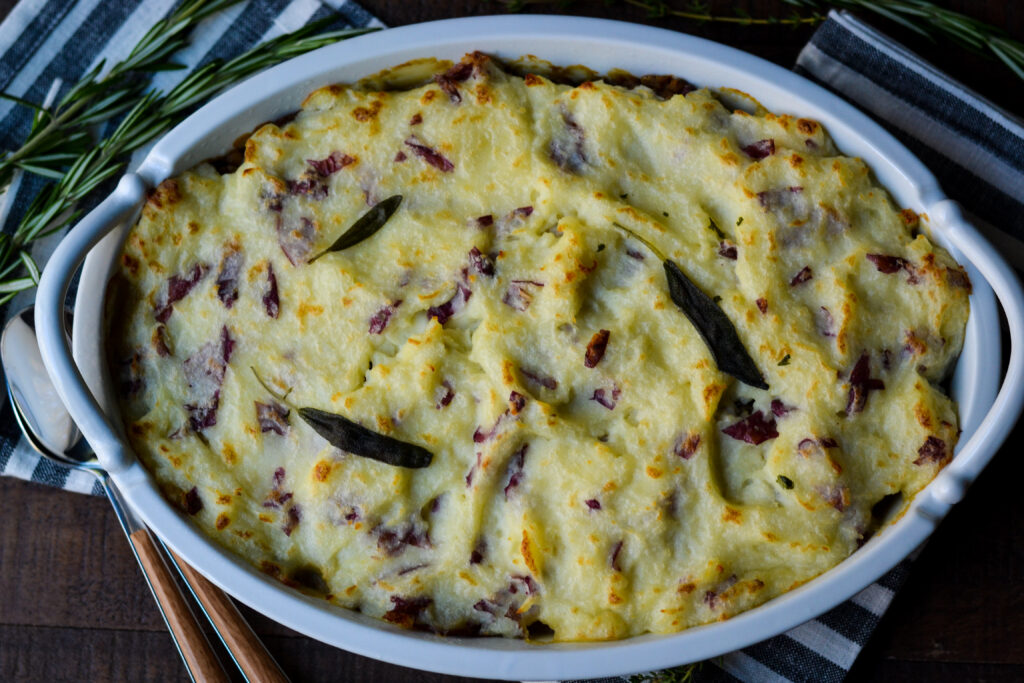
Recently, more and more people are paying attention to where their food comes from. Reading food labels, understanding how animals are raised and how to source the best produce. Even if that means growing their own vegetables. Learning about sustainable food terminology is an ongoing lesson for me. Although, I am aware of this growing movement to eat and cook in a more sustainable way, it’s not always easy; I tend to get overwhelmed with keeping track of labels and remembering the best options, especially when shopping on a whim. I also have two young children who don’t always eat what I cook, which results in food waste. I’ve been trying to do better, but many times I just need a little guidance and a go-to resource so I was really interested in checking out foodprint.org.
The FoodPrint Website
FoodPrint is a website which aims to educate consumers on how to make better food choices that will positively affect animal welfare and people. The site encourages the reader to consider their “foodprint,” which is the impact that our food purchases have on the environment, animals and people.
With the wealth of information online about this topic, I was curious as to how FoodPrint is different. I learned so much from just casually perusing their website. It is designed in a user-friendly and engaging in way that makes you feel better informed as you go. It truly is a one stop shop for information on sustainable eating.
Two of my favorite areas on the site are the Food Label Guide and Real Food encyclopedia. If you’re like me and feel overwhelmed by food labels, you’ll love their food labels page. It is visually intuitive and is organized by food label category for example, dairy, meat etc. The Real Food Encyclopedia goes into detail about different ingredients and how to choose the best of its kind.
How FoodPrint helped change my Thanksgiving menu
As I plan my Thanksgiving menu, I found myself wanting to make changes based on the information I gathered from FoodPrint. Here are the top 3 things changes I plan on making to my menu:
- Buying a heritage turkey instead of Butterball brand. I had never heard of heritage turkeys until reading about them on FoodPrint. To clarify, heritage is the type of bird, not the brand. As per the FoodPrint site, “a heritage bird is a breed of turkey that has remained pure throughout many generations, with a continued focus on flavor instead of size.” They are a better option over Butterball or other commercially produced turkeys that are bred to produce more breast meat- which feeds more mouths at Thanksgiving. I was fascinated about heritage birds and called my local poultry farmers and Whole Foods to source one for our Thanksgiving dinner this year. Turns out, they aren’t readily sold in many stores and you have to pre-order. FYI- they are more expensive and can range anywhere from $3.50-$7.50/lb, but as recipe developer and someone who enjoys quality over quantity, I’m willing to pay the extra bucks. Not to mention supporting the poultry farmers who heavily rely on our patronage during this particular time of year.
- Buying produce from my local farmers market. My plan was to buy all the produce I needed for my Thanksgiving menu from my local Publix. However, after spending so much time on FoodPrint I decided to seek out my local farmers markets instead. I came across this gem in Longwood, FL which is open daily! Now I can buy all of my vegetables the week of Thanksgiving and feel good about it being sustainably sourced.
- Reducing food waste. One thing I’ve been increasingly concerned with in my kitchen is food waste. As I cook larger amounts for Thanksgiving this year, I plan to incorporate parts of ingredients that I would normally throw out, like the skin of carrots or potatoes. And I can use the parts that really are scraps to make vegetable stock and freeze it for later use.
I believe we all may want to practice healthier choices and eat more sustainably, but with all the overwhelming options at the grocery store, what does a shopping trip to make a sustainable meal look like? I set out to recreate a dish my family loves- a vegetarian shepherd’s pie, but in a more sustainable way. The results were amazing. We love this dish because it’s economical and filling. It would also be the perfect side dish for your vegetarian guests.
How did I incorporate what I've learned from FoodPrint in this recipe?
- I purchased 90% of the ingredients from my local farmers market. The ingredients were fresh and more vibrant in color. I bought only what I needed.
- I decided not to peel the potatoes. This helped eliminate food waste and include the nutrients in the potato skin.
- Scrubbing the carrots instead of peeling helped eliminate food waste- I didn't notice a difference in the carrots once cooked.
- I utilized the leaves of the celery stalks and left the herbs on its stem. I've never cooked celery leaves before and I couldn't even tell you why, but I felt good using the entire stalk.
- For the lentils, I purchased only what I needed for this recipe. This way there are no leftovers in the pantry that get forgotten about. This was also my first time buying loose legumes.
When we start to pay more attention to how our food is sourced, we essentially are taking control of our health. In a world where we are bombarded with ads and fads, it can be really difficult to determine which food is truly healthy. The foodprint.org site really helped educate me on what foods to buy to reduce my foodprint. We must learn to cook better and make better food purchasing choices- when they are available to us. The foodprint website aims to challenge us to consider that where our food is sourced is just as essential as what we put into our bodies.
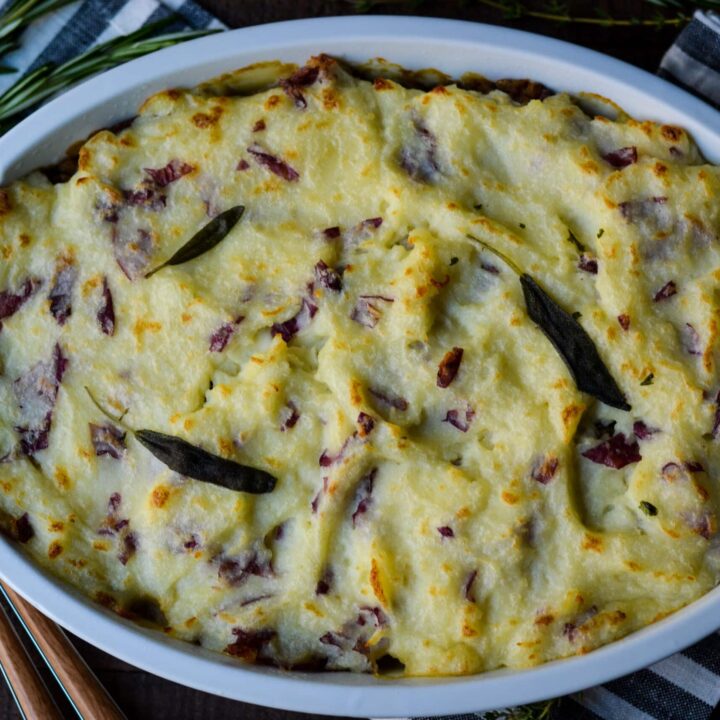
Vegetarian Shepherd’s Pie Recipe
Ingredients
Mashed Potatoes
- 1 lb red potatoes (5-6 large), quartered with skin on
- 6oz salted butter (1 ½ sticks)
- ½ tsp salt
- ¼ tsp garlic
- 3-4 tbsp milk
Filling
- 2 tbsp avocado oil
- 1 large onion
- 3 garlic cloves
- 2 celery stalks and leaves, chopped
- 8oz crimini mushrooms
- ½ tsp salt
- ½ tsp black pepper
- 2-3 tsp worcestershire sauce
- 1 cup carrots, diced
- 12 oz lentils, rinsed
- 1 cup fresh plum tomato, diced
- 3-4 sprigs thyme
- 1-2 sprigs rosemary
- 3 ½ cups vegetable stock
This post is paid partnership with FoodPrint.org. All opinions are my own. The attached recipe is an original development for FoodPrint.org.



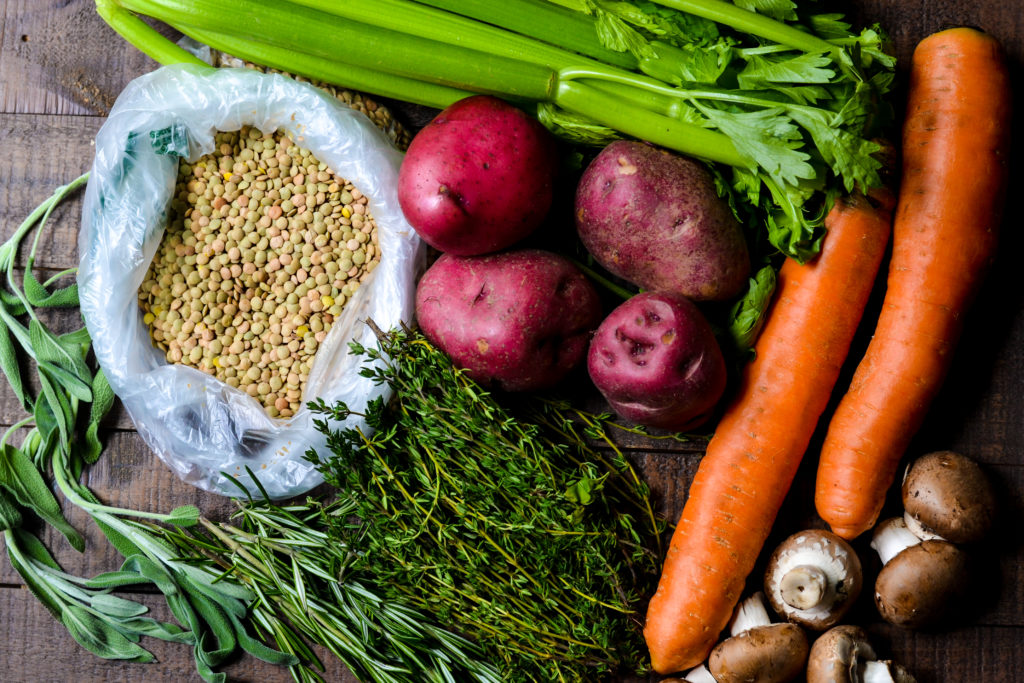
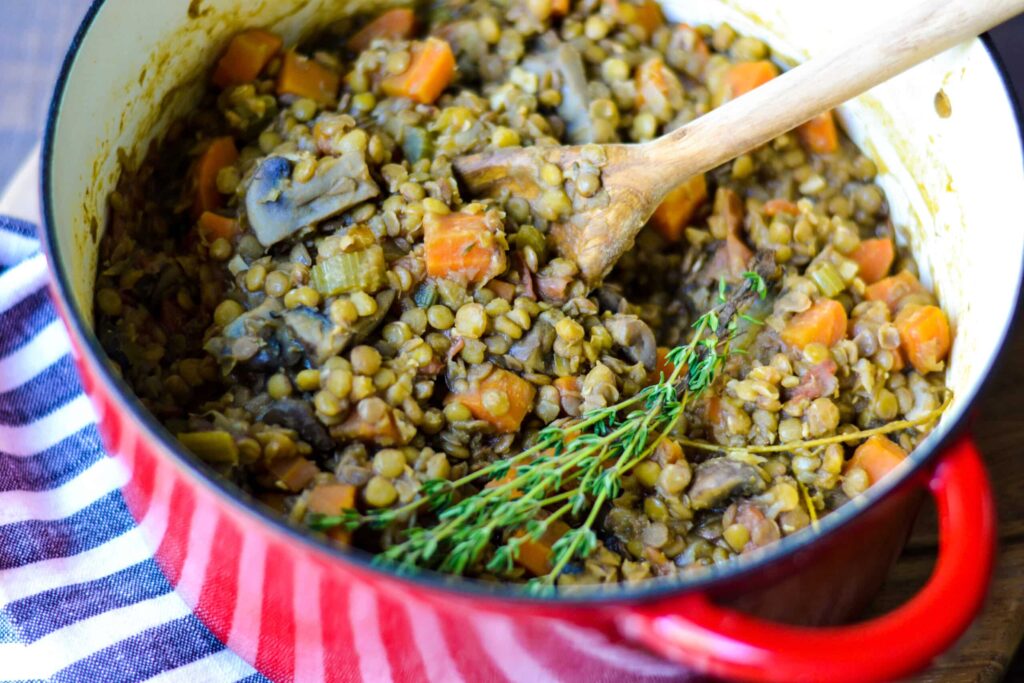
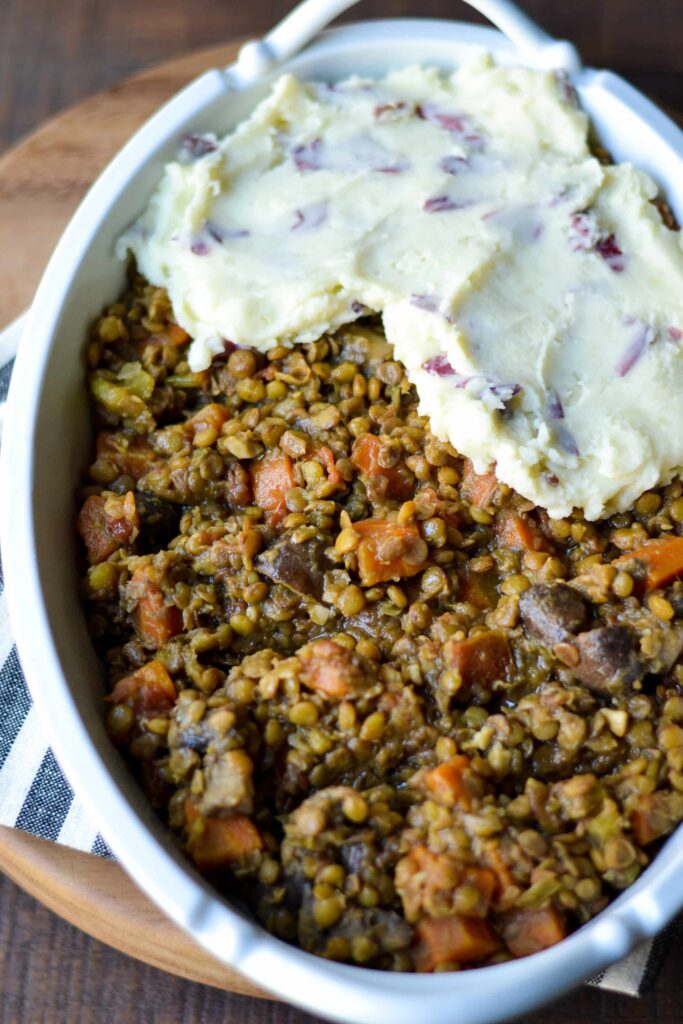
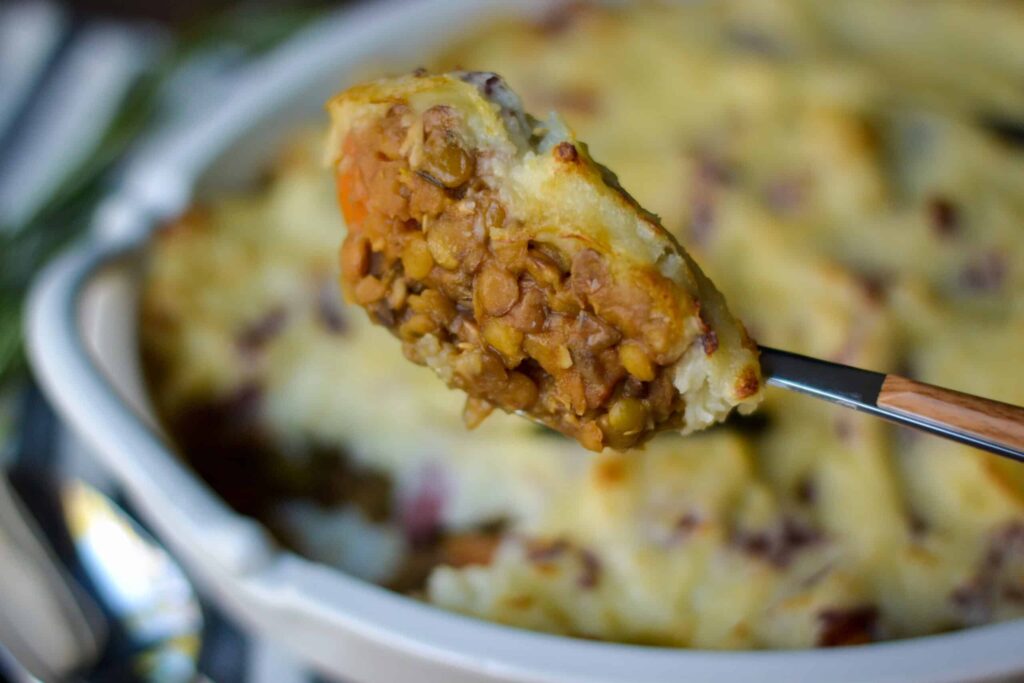
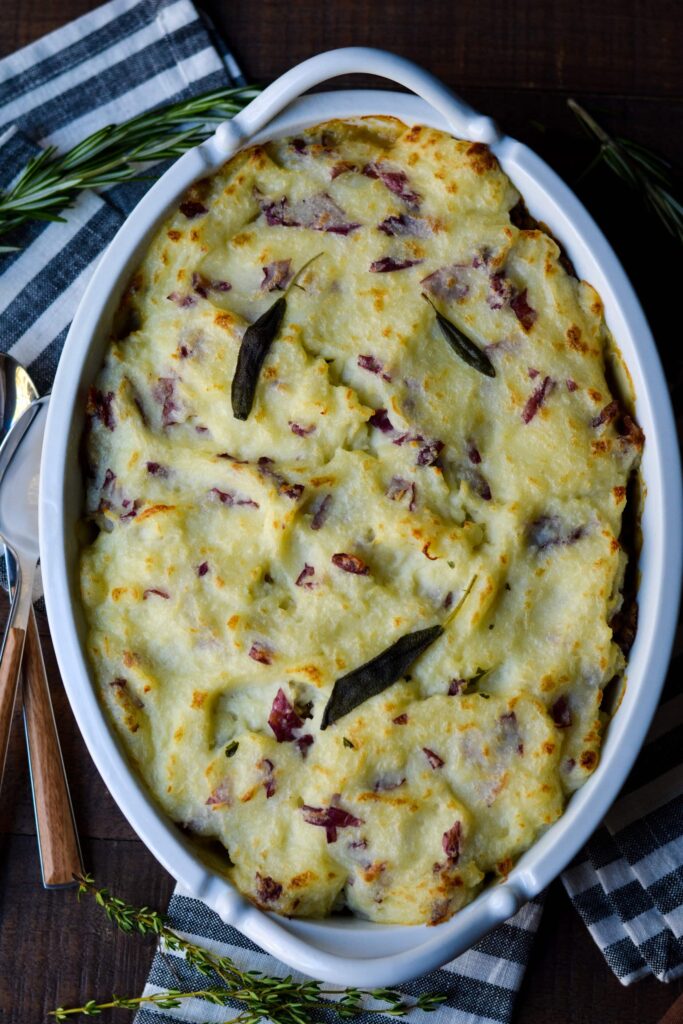

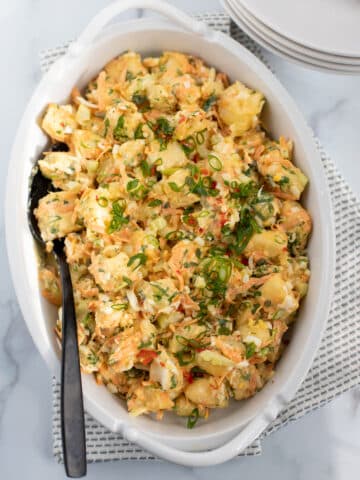
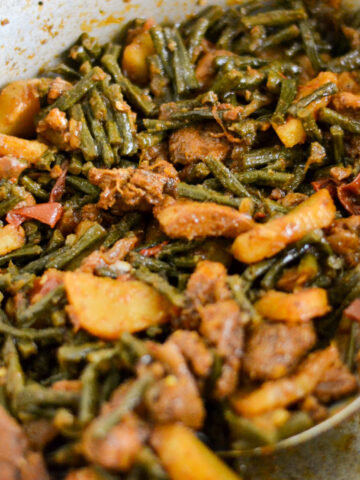
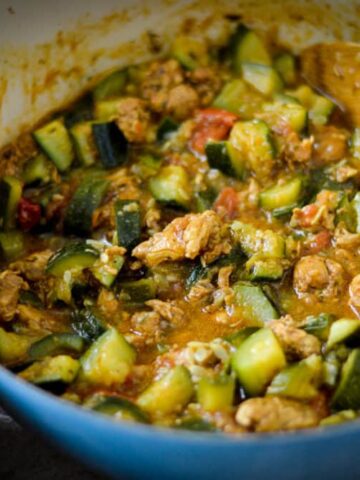
Kami | Life with Kami
This recipe looks so delish and hearty, thanks for sharing so many tips and I will definitely be checking out the Foodprint.org site.
Alica
It's really delicious, you're going to love it! And FoodPrint is an excellent resource. Enjoy!
SivaShakthi
This recipe sounds awesome. Should try soon. May I know what lentil you have used here? Happy Thanksgiving.
Alica
Hi Siva! I used brown lentils here. You can also use black or green. Be careful with the orange ones since the husk is removed, it will cook instantly and become too watery for the filling.
Louise
What a great blog article. Thanks for sharing the FoodPrint information. Your recipes are always wonderful and this type of information is really helpful. I think more time needs to be spent considering sources of food and how we use them. Humans tend to think that the world revolves around us when in fact we are simply just another creature and our existence affects everything including the land we are on. Thank you!